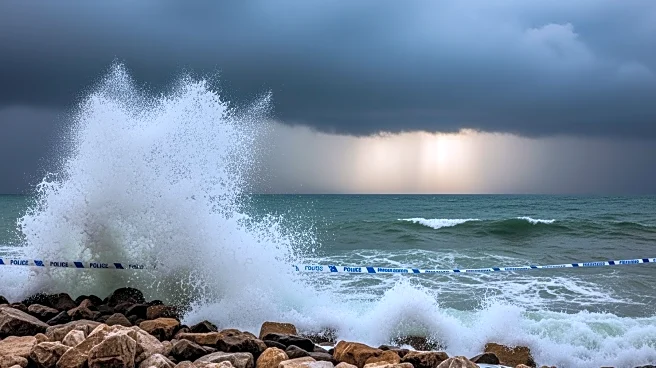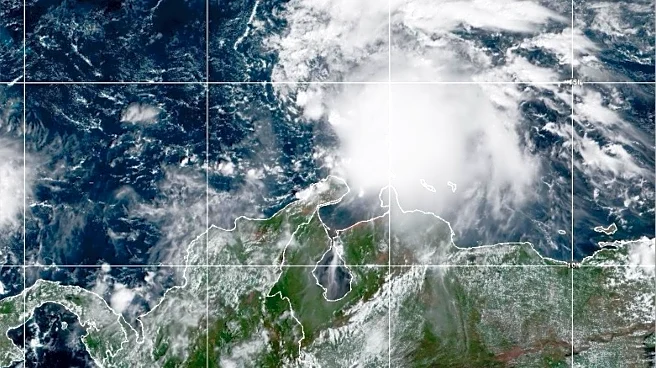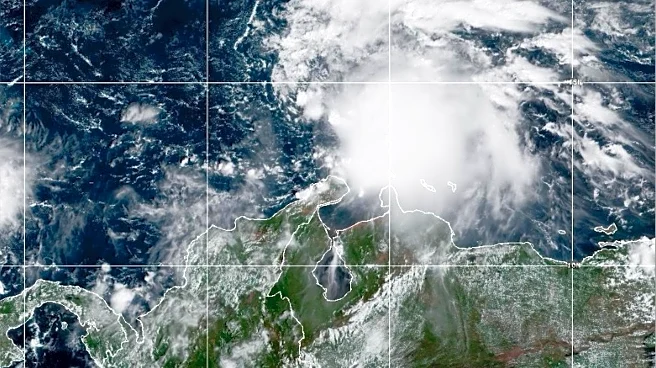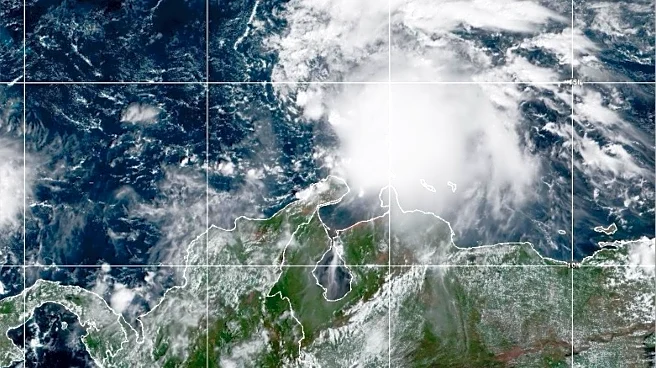What's Happening?
Tropical Storm Melissa has caused significant flooding in Haiti, resulting in the deaths of at least three individuals. The National Hurricane Center in Miami has issued warnings about life-threatening
and catastrophic flash flooding and landslides throughout Hispaniola, which includes Haiti and the Dominican Republic. The storm is expected to bring up to 14 inches of rain in the coming days, posing a severe risk to the region. The Haitian Civil Protection Agency reported fatalities due to landslides and falling trees, while the Dominican Republic is experiencing disruptions in water supply systems affecting over 500,000 customers.
Why It's Important?
The impact of Tropical Storm Melissa highlights the vulnerability of Caribbean nations to severe weather events, particularly in terms of infrastructure and emergency preparedness. The heavy rainfall associated with the storm poses a significant threat to life and property, with historical data indicating that rainfall is often the leading cause of fatalities during tropical storms and hurricanes in the region. The disruption of essential services, such as water supply, underscores the potential for long-term humanitarian challenges. The situation demands urgent attention from local governments and international aid organizations to mitigate the effects and provide relief to affected communities.
What's Next?
The storm is projected to drift westward, potentially affecting Jamaica early next week. Authorities in Jamaica and Haiti have issued hurricane watches and tropical storm warnings, urging residents to prepare for possible evacuations and to secure their homes against the anticipated heavy rains and strong winds. Emergency operations in the Dominican Republic are closely monitoring the situation, emphasizing the need for continuous updates and preparedness measures. The ongoing Atlantic hurricane season, which runs until November 30, suggests that further storms could pose additional threats to the region.
Beyond the Headlines
The recurring nature of such storms raises questions about climate resilience and the need for sustainable infrastructure development in vulnerable regions. The ethical responsibility of wealthier nations to support climate adaptation efforts in less developed countries is increasingly relevant, as these areas face disproportionate impacts from climate-related disasters. Long-term strategies for disaster risk reduction and community resilience are essential to minimize future losses and enhance recovery capabilities.












